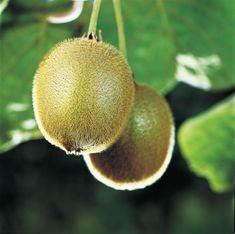
Most of Chile's fresh kiwifruit traders agree that the 2003-04 deal started strong, but fizzled late in the season when greater than anticipated supplies outpaced demand in both the EU and US markets.
Although Chile's kiwifruit job is not yet complete for the year, enough of the fruit has been shipped for industry leaders to have a sense of how the season will fare.
"Overall, this has been a good season for kiwifruit growers and exporters in Chile," says Sebastian Varas, production chief at Exportadora Agua Santa (Santiago). "It was especially good at the beginning of the season, when there was an open window for us. But now, at the season's end, there appear to be problems."
Chris Schitti, trade director at Exportador Los Lirios SA (Santiago), adds: "The kiwifruit deal started strongly this year, and ended poorly."
This perception is supported by a recent study by Decofrut, the Santiago-based fruit industry services provider. Decofrut noted that more than 5.3 million cases of Chilean kiwifruit were shipped to Europe in May, when there still remained significant amounts of Italian kiwifruit in the market and when New Zealand's fruit was just arriving. The result was an oversupply of kiwifruit that drove prices sharply down. A particularly large demand from Italian handlers is reported to have been responsible for the monthly hike.
A similar situation occurred in the US market, where Decofrut noted that May arrivals of Chilean kiwifruit coincided with the start-up of California's stonefruit season and new arrivals from New Zealand.
"In the EU and North America, importers are worried about the condition of the kiwifruit that has been sent to them," Varas says. "They are concerned about the shelf life of the fruit. Most of the kiwifruit has been shipped in modified atmosphere bags, or box liners, that alter the gas mix so that the fruit will last longer."
Schitti is confident that prices will be on form this year. He says: "Fortunately, we were only in the early part of the kiwifruit deal. Last season prices rebounded at the end of the season, and I don't think that will happen this year."
The Decofrut study found that average prices in the oversupplied EU market were about 10 per cent below the previous season, while in the US market average prices remained strong, running between 20 and 60 per cent higher than in the previous two seasons.
Chile began the 2003-04 kiwifruit season with high expectations. Italy had a hot summer and the kiwifruit harvest was expected to be both short and small-sized. This stirred speculation at the beginning of the season that allowed many growers to demand, and receive, fixed price contracts or guaranteed minimum prices. Most Chileans in the kiwifruit deal expected a bonanza season. Instead, it turned out to be what is termed as a normal season, although volumes were greater than initially expected.
According to Decofrut, total Chilean kiwifruit exports were up by 19 per cent through the end of May to 11.1m cases, with much of the increased volumes shipped to the EU market, where volumes grew by 26 per cent to 8m cases.
Kiwifruit shipped to the US market also increased, though only by five per cent, for a total of 1.7 million cases through the end of May. Meanwhile, kiwifruit exports to Latin America fell by 18 per cent to 365,000 cases, and volumes to the Far East were down by 8 per cent to 723,000 cases.
Chile's increased kiwifruit production in the 2003-04 season counters a general, worldwide decline in production, which was confirmed at a recent International Kiwifruit Seminar hosted by Chile's Exporters Association in Santiago, Chile, May 26 and 27.
Two kiwifruit experts who spoke at the seminar - Patricio Toro, trade director at Copefrut SA (Curico, Chile) and Desmond O'Rourke, president of the US-based fruit analysis company Belrose Inc, agreed that world demand for kiwifruit in coming years is likely to outstrip production, leaving the field clear for continued good market conditions and improved prices.
This was good news to Chile, since kiwifruit is the nation's third most important export fruit (after table grapes and apples), with more than 12-13m cases of kiwifruit shipped to world markets each season at a value of about $85m.
Chile currently enjoys a 13 per cent market share of the world's kiwifruit trade, outstripped only by Italy, with a 36 per cent market share, and New Zealand, with a 25 per cent market share.
Chile's kiwifruit business was exceptionally profitable in both the 2001-02 and 2002-03 seasons, led by brisk demand and good prices in the EU market. Growers attending the May seminar reported they were receiving as much as $0.60 a kilo for their fruit this season, considerably higher than the $0.25-0.30 a kilo received in more 'normal' times. Production costs usually run about $0.15 a kilo. Hence the high, albeit unmet expectations for the 2003-04 season.
Next week: the Journal takes a look at New Zealand’s kiwifruit season.



